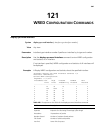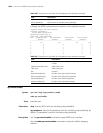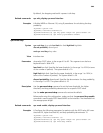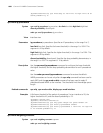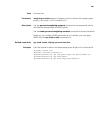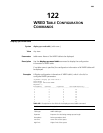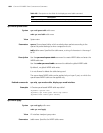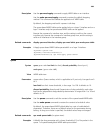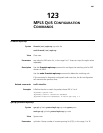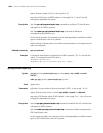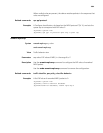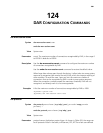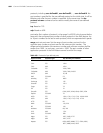
1855
Description Use the qos wred apply command to apply WRED table on an interface.
Use the undo qos wred apply command to restore the default dropping
method. This command also deletes the application of WRED table.
By default, the dropping method of a queue is tail drop.
The queue-based WRED table can be applied only on a Layer 2 interface and on a
layer 2 interface only the queue-based WRED table can be applied.
Execute the command in interface view, and the setting is valid on the current
interface only. Execute the command in interface group view, and the setting is
valid on all interfaces in the interface group.
Related commands: display qos wred interface, display qos wred table, qos wred queue table.
Examples # Apply queue-based WRED table queue-table1 on a layer 2 interface.
<Sysname> system-view
[Sysname] interface Ethernet1/0
[Sysname-Ethernet1/0] qos wred apply queue-table1
queue
Syntax queue queue-value low-limit low-limit [ discard-probability discard-prob ]
undo queue { queue-value | all }
View WRED table view
Parameters queue-value: Queue number, which is applicable to L2 port only. It ranges from 0
to 3.
low-limit low-limit: Lower threshold, in the range 1 to 128. It defaults to 10.
discard-probability discard-prob: Denominator of drop probability; each drop
level has an independent drop probability denominator. It ranges from 1 to 16 and
defaults to 10.
Description Use the
queue command to edit the content of the queue-based WRED table.
Use the
undo queue command to restore the content to be default value.
By default, the queue-based WRED global table has a set of usable default
parameters. Therefore, there are no default values for the parameters during
editing. As long as no value is specified, the default values keep unchanged.
Related commands: qos wred queue table (in system view).
Examples # Modify the drop parameter with a lower threshold of 10 of the packet in the
queue 1 of queue-based global WRED table queue-table1.



